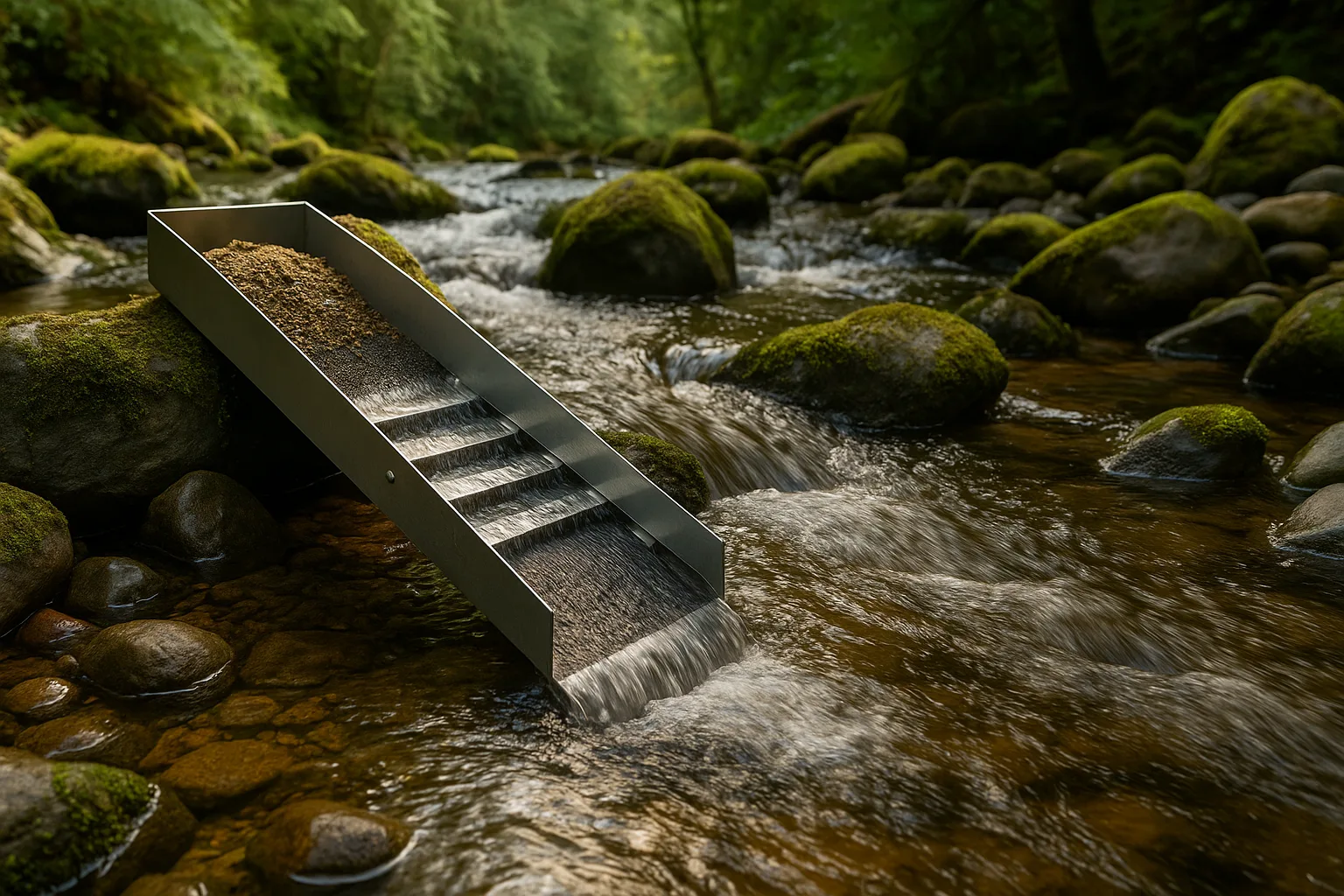How to Use a Sluice Box Effectively
Set up and run a sluice box in Oregon creeks: angle, water flow, feed rate, and cleanup best practices.

Introduction
A well-tuned sluice multiplies your processing capacity. Correct angle, flow, and feed rate keep gold trapped while lighter material washes away. Oregon streams demand careful setup to handle variable water volumes and mixed gravels.
Equipment and Materials
- Sluice box with matting/riffles
- Shovel, bucket, classifier
- Stake or rocks for stabilization
Step-by-Step Instructions
1) Set initial angle
Start around 1 inch drop per foot; adjust for matting and sediment load.
2) Dial in water flow
Target brisk flow that clears light material without boiling the riffles.
3) Control feed rate and wash cycles
Feed steadily with classified material; pause to let riffles reset during heavy black sands.
4) Inspect, cleanup, and reset
Check capture zones periodically. Clean matting when concentrate builds up.
Pro Tips
- Use a small level/inclinometer for repeatable setups.
- Pre-classify to reduce clogging and improve capture.
- Observe tailings; recapture indicates over-feeding or wrong angle.
Common Mistakes
- Too steep or too much water—gold rides out.
- Feeding unclassified gravels—causes turbulence and poor recovery.
- Skipping inspections—missed adjustments lose gold.
Troubleshooting
If you see color in tailings, reduce angle slightly and slow the feed while increasing classification.
FAQ
Best matting? Use matting matched to your sediment and flow; test locally.
How often to clean? When riffles accumulate heavy black sands.
Conclusion
A methodical setup yields consistent recovery, letting you process more material with confidence.
Related guides: Choose a Gold Pan · Process Concentrates